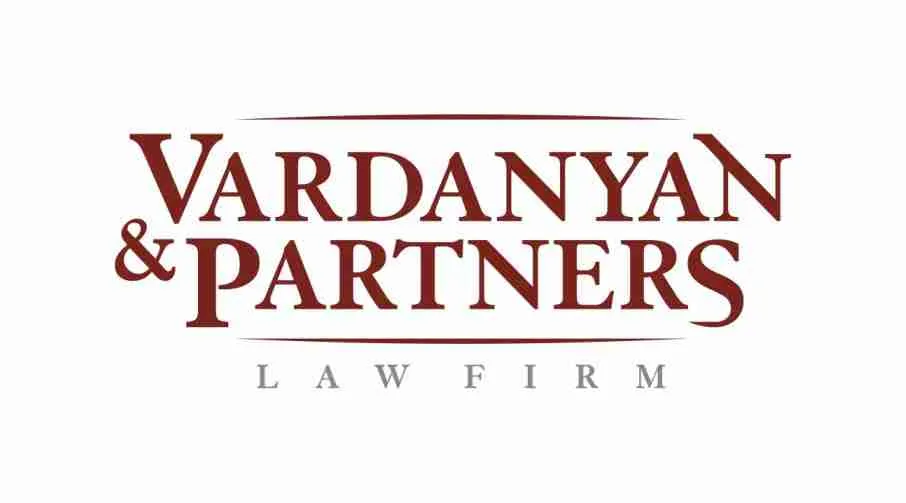Estonia has positioned itself as a trailblazer in fostering entrepreneurial growth, being the first country to offer e-Residency, a program launched in 2014 that provides a digital identity allowing global entrepreneurs to access government services online. Known for its highly digitalized economy and business-friendly environment, Estonia is an attractive destination for entrepreneurs worldwide.
Whether you aim to run a business remotely or establish a physical presence, Estonia provides tailored pathways to access its thriving business ecosystem. The e-Residency program offers digital entrepreneurs the tools to manage businesses online, while the Temporary Residence Permit (TRP) caters to those seeking to invest and settle in Estonia. These options exemplify Estonia’s commitment to empowering global entrepreneurs to succeed.
Estonia’s Temporary Residence Permit for Business Investment

The Temporary Residence Permit (TRP) for business investment in Estonia is a residency option granted for 5 years, designed for entrepreneurs who wish to establish a physical presence in the country. It is directly tied to business activities and investment, making it an ideal choice for those looking to integrate into Estonia’s economy while leveraging its strategic access to the European Union.
The temporary residence permit is tailored for:
Entrepreneurs planning to invest in or establish a business in Estonia.
Business owners seeking a physical base to operate within the EU.
Individuals committed to creating a tangible economic connection to Estonia through investment or self-employment.
Eligibility Criteria
With a robust infrastructure and access to the EU market, Estonia’s Temporary Residence Permit (TRP) is an excellent opportunity for business-minded individuals. However, meeting specific eligibility criteria is essential to secure this permit.
Estonia’s TRP program is subject to an annual immigration quota, limiting the number of permits issued to 0.1% of the country’s population. Data from Estonia's Ministry of the Interior reveals that the government allocates more than 1,300 permits annually under the migration quota. The current population of Estonia is 1,353,666. As quotas can fill quickly, early application is advised to secure permits for yourself and your family.
Key Requirements
Business Plan: Applicants must submit a detailed business plan, including financial forecasts for the next two years. This demonstrates the viability and economic benefit of the business.
Proof of Health Insurance and Income: Applicants need comprehensive health insurance and evidence of sufficient income, typically at least €1,200 per month.
Demonstration of Residential Address: Proof of a residence address in Estonia is required.
With a successful application, a TRP is granted for up to five years, enabling individuals to live and work in Estonia while accessing the broader EU market.
Application Process
Securing a Temporary Residency Permit (TRP) in Estonia through business investment is a streamlined process that requires careful planning and preparation. Here’s a step-by-step guide combining business registration and residency application details:
Step 1: Preparing Your Documents
Gather the necessary documentation:
Business Plan:
Name and registry code of your company.
Description of business activities, target customers, suppliers, and financial forecasts.
Development plans, including fixed/current assets and labor force needs.
Profit projections and cash flow forecasts for two years.
Biographies of key management personnel.
Investment Proof: A minimum investment of €65,000 into the share capital of an Estonian company, or €16,000 for self-employment.
Identity and Insurance: Valid passport, a recent digital photograph, and proof of comprehensive health insurance.
Sufficient Income: Documentation showing a legal monthly income of at least €1,200.
State Fee Payment: Proof of payment for the TRP processing fee.
Additionally, applicants must have a documented connection to Estonia, such as an address, and meet the annual immigration quota. The immigration quota limits the number of aliens who can settle in Estonia. This means that depending on the version of TRP, only a certain amount of residence permit applications will be accepted each year.
Step 2: Business Registration in Estonia
There are two primary routes:
Option 1: Notary Registration with Power of Attorney
This option allows you to register your business remotely.
Power of Attorney: Provide a notarized and legalized (or apostilled) PoA in your local language or English, translated into Estonian.
Details and Documents Required: Business name, address, activity, shareholder/management board details, share capital structure, and beneficial ownership.
Timeline: Typically completed within 1-5 days, with 2-5 additional days for document preparation and notarization.
Option 2: Local Registration at the Notary
Register your company in person at a notary's office in Estonia.
The process involves the following steps:
Contribution of Share Capital and State Fee Payment
Document Preparation and Filing
With the assistance of a notary, the following documents must be prepared and filed with the Commercial Register:Memorandum of Association: Outlines the agreement to form the company.
Articles of Association: Specifies the company’s structure and governance.
Application: The formal request to register the company.
Information on Communication Devices: Details such as the company’s official email and phone number.
Bank Certificate: Verifies the deposit of the share capital.
State Fee Certificate: Confirms the payment of the required fee.
The notary’s office provides samples and templates for all necessary documents, ensuring accuracy and compliance with Estonian laws.
Registration Timeline
The notary will prepare and file the documents on your behalf, with the registration process typically taking 2-3 days.
By leveraging the expertise of notaries and Estonia’s streamlined procedures, entrepreneurs can efficiently establish a local company and begin operating in one of Europe’s most business-friendly environments.
Step 3: Submission and Review of Your Application
Submit your TRP application to the Estonian Police and Border Guard Board (PBGB) once your business is registered. Key aspects include:
Submission Points: Applications can be filed at Estonian embassies abroad or service centers within Estonia.
Processing Timeline: Officially 2 months but can extend to 3-6 months in practice.
Additional Requests: Be prepared to provide further details if authorities require clarification during the review process.
Once your application is approved, you will be granted a temporary residence permit, valid for 5 years.
E-Residency in Estonia: A Digital Gateway to Business Environment and Digital Identity
Estonia’s e-Residency program is a revolutionary initiative that opens the doors to its highly digitalized business ecosystem for global entrepreneurs. Launched in 2014, the e-Residency of Estonia enables global entrepreneurs to access secure online services and obtain a government-issued digital identity without the need to relocate to Estonia.
What Is E-Residency?
Estonia’s e-Residency is not a residence permit. Instead, it is a digital identity solution designed for individuals who want to access Estonia’s business infrastructure remotely. The e-Residency digital ID allows non-residents to establish and manage companies in Estonia without ever setting foot in the country.
Key Features of E-Residency
Online Business Management: Establish and manage a company registered in Estonia entirely online, no matter where you are.
Access to Digital Services: Gain access to Estonia’s e-government tools, including secure digital signatures, encrypted communication, and document authentication.
Streamlined Administration: Operate a business 100% electronically with minimal paperwork, saving time and reducing costs.
Global Convenience: You can launch and operate an EU-based company with just a smartphone and an internet connection.
What E-Residency Does Not Provide
To avoid confusion, it’s crucial to understand what e-Residency is not:
It does not grant physical residency or the right to live in Estonia or the EU.
It does not provide tax residency or visa-free travel within the EU.
It does not provide Estonian e-citizenship or permanent settlement.
Who Should Consider E-Residency?
E-Residency is ideal for:
Entrepreneurs running location-independent businesses who want access to the EU market.
Digital nomads seeking a cost-effective way to manage their business operations in a stable legal and financial framework.
Business owners who prefer to avoid the hassle of physical relocation or frequent travel to Estonia.
How Is E-Residency Different from Temporary Residence Permits (TRP)?
Type | E-Residency | Temporary Residence Permit (TRP) |
Purpose | For remote digital entrepreneurs | For investors and entrepreneurs seeking physical residency in Estonia |
Requirements | Minimal, with a straightforward application | Requires significant financial investment and a detailed business plan |
Physical Presence | Not required | Requires proof of an address and economic activity in Estonia |
Why Choose E-Residency?
Estonia’s e-Residency program is an ideal solution for entrepreneurs seeking to establish a company within the EU remotely. Estonia's e-Residency program offers access to a business-friendly and highly digitalized infrastructure without requiring physical relocation. Additionally, the program ensures efficiency through a paperless and secure administrative process, making it a seamless choice for modern, location-independent businesses.
However, for those seeking physical residency, access to the EU market as a resident, and pathways to citizenship, the Temporary Residence Permit (TRP) is a more suitable option.
Tax Implications of Estonian e-Residency
Estonian e-Residency has several tax implications that entrepreneurs should be aware of. As an e-Resident, you are not considered a tax resident of Estonia unless you have a permanent residence in the country. However, you may still be required to pay taxes in Estonia on your business income.
Estonia has a unique tax system where corporate income tax is charged on profit distribution only and is capped at 20%. This means that you only pay taxes on the profits you distribute to yourself or your shareholders, not on the profits you reinvest in your business. This system can be particularly advantageous for growing companies, as it allows for reinvestment without immediate tax burdens.
As an e-Resident, you are required to file your taxes online using the Estonian Tax and Customs Board’s e-services. You will need to obtain a tax identification number and register for value-added tax (VAT) if your business meets the necessary criteria. The digital infrastructure of Estonia makes this process straightforward and efficient, aligning with the country’s reputation as one of the most digitally advanced countries in the world.
It’s also important to note that Estonia has bilateral double taxation agreements with over 60 countries, which can help reduce your tax liability. These agreements ensure that you are not taxed twice on the same income, providing a significant benefit for global entrepreneurs.
Benefits of Investing in Estonia

Estonia, an Eastern European country known for its innovative tech sector and pro-business government, offers a range of benefits for investors.
1. Online Business Infrastructure: Estonia is celebrated for its ease of doing business, consistently ranking high in global indexes thanks to its innovative e-Government services and business-friendly regulations. Through the e-Residency program, entrepreneurs can establish and manage an EU company entirely online, accessing Estonia’s advanced digital infrastructure and streamlined services for company registration, tax filing, and banking.
2. Attractive Tax Environment for Companies: Estonia’s unique tax system doesn’t tax retained earnings until they are distributed, offering businesses more flexibility to reinvest profits and grow without the burden of immediate tax obligations. In Estonia, distributed profits are typically subject to a 20% corporate income tax (CIT), calculated on 20% of the net distribution amount. However, from 2018 onwards, companies that make regular profit distributions can benefit from a reduced CIT rate of 14%. Estonia’s tax system uses a flat 20% rate, which applies to all income earned by resident taxpayers. For non-residents, only income derived from Estonia is taxed.
3. A Stable and Growing Economy: Estonia offers a gateway to the European market, providing businesses with opportunities for export and collaboration across the EU. With its stable and growing economy, Estonia’s membership in the EU grants access to a market of over 500 million consumers.
4. Mobility within the Schengen Area: A residence permit obtained by making investment in Estonia grants the right to travel freely within the Schengen Area for up to 90 days within a six-month period, offering mobility across Europe.
Path from Temporary Residency to Permanent Residency and Citizenship in Estonia

Estonia offers a pathway from temporary to permanent residency and ultimately citizenship for those who choose to settle in the country. After obtaining a Temporary Residence Permit (TRP), foreign entrepreneurs can apply for permanent residency once they have fulfilled specific criteria.
Path to Permanent Residency: To qualify for permanent residency in Estonia, you must meet the following conditions:
- Hold a temporary residence permit for at least five years.
- Be covered by valid Estonian health insurance.
- Demonstrate a basic understanding of Estonian culture
- Demonstrate proficiency in the Estonian language at a B1 level. The application is going to be filled out in Estonian.
- Have a permanent legal income in Estonia, ensuring financial stability.
- Be registered in Estonia’s official population register with your name and address.
- Submit your application at least two months before your temporary residence permit expires.
Once you’ve obtained permanent residency, you gain the rights and benefits of being a member of Estonia's permanent population.
Path to Citizenship: After holding permanent residency for at least five years, you can apply for Estonian citizenship. To be eligible, you must meet the following requirements:
- Have held permanent residency for at least five of the last eight years.
- Demonstrate proof of ordinary income, with a minimum monthly income of €260, sourced from business income, salary, or other legitimate financial sources.
- Pass an Estonian government exam that tests your knowledge of Estonia’s constitution and citizenship law.
- Demonstrate proficiency in the Estonian language at a B1 level.
Estonia does not permit dual citizenship, so applicants must renounce their current citizenship to naturalize. After successfully completing these requirements, you will gain Estonian citizenship and the associated rights within the European Union.
In conclusion, Estonia offers two compelling pathways for entrepreneurs looking to tap into its thriving business environment: the e-Residency program and the Temporary Residence Permit (TRP). While e-Residency is an ideal choice for digital entrepreneurs seeking remote access to the EU market, the TRP offers a more traditional option for those wanting to establish a physical presence in Estonia and benefit from long-term residency rights.
For more information on investment programs in other countries, we invite you to explore the comprehensive resources available on our website.

Lusine Sargsyan
Attorney
